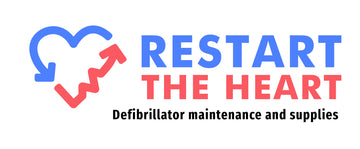Top AED Maintenance Questions Answered for Beginners
Automated External Defibrillators, known as AEDs, are essential tools for responding swiftly in cardiac emergencies. These compact devices are lifesavers, providing vital assistance before medical professionals arrive. They are designed to be user-friendly, allowing even those without medical training to effectively use them in the event of sudden cardiac arrest. The significance of AEDs in public spaces cannot be overstated, as they can significantly increase the chances of survival.
Maintaining an AED is crucial to ensure it's ready to function at a moment's notice. For many beginners, understanding how to properly care for an AED might seem challenging. However, with some guidance and regular attention, ensuring your AED is in peak condition becomes straightforward. Proper AED maintenance involves knowing what checks to perform, when to replace components, and how to troubleshoot minor issues. By keeping your AED in good working order, you contribute to a safer environment for everyone around you.
Common AED Maintenance Questions
Stepping into AED maintenance? Here are some commonly asked questions and practical answers to set you on the right path.
1. What routine checks should I perform on my AED?
Regularly inspect your AED to make sure it's in its designated location and easily accessible. Check for any visible damage or wear on the device and its components. A solid cover, intact connections, and an active status indicator are vital signs that your AED is ready for use.
2. How often should I replace AED pads and batteries?
Generally, AED pads need replacing every two years, or immediately after use. Batteries, on the other hand, should be replaced every three to five years, depending on the model. Keep track of these timelines and always have spares within easy reach to avoid any last-minute scrambles.
3. What are the signs that my AED needs servicing?
Look out for any unusual beeping sounds or flashing warning lights, as these can signal the need for maintenance. Regularly listen for the periodic self-test beeps. If something seems off, consult the manual or contact a professional for a thorough check-up.
4. How do I ensure my AED is ready for an emergency?
Consistency is key. Perform regular checks and update your maintenance log. Ensure everyone in your location knows where the AED is kept and how to use it. Practicing mock drills can also prepare you for real-life situations, ensuring you're both confident and efficient when the time comes.
By addressing these questions, you can maintain your AED's readiness and ensure its optimal performance during an emergency. Regular maintenance doesn’t just protect the AED; it safeguards lives.
Troubleshooting Basic AED Issues
Even the most reliable devices can experience hiccups. Knowing how to address basic AED issues helps keep your unit ready for action. A clear understanding of what to do when things don't go as planned can mean the difference between an AED that's good to go and a device that's out of commission.
When an AED malfunctions, the first step is to stay calm. Check whether anything is obstructing the device or its components. Unplug and reattach all cables to ensure they're firmly connected. Most AEDs have a display screen that will indicate the type of issue through error codes. Refer to your user manual to decode these messages. If the manual's suggestions do not work, it may be time to contact a qualified technician. Avoid attempting advanced repairs as they can exacerbate the problem.
It's crucial to know when to call in an expert. If error messages persist or you notice physical damage such as cracks or an unusually warm battery, avoid further use. Reach out for professional AED servicing to prevent worsening the condition. Enlisting the help of certified professionals ensures the device remains fit for future emergencies.
Best Practices for AED Maintenance
Optimal AED performance starts with conscious, regular maintenance. Knowing how to properly care for the device extends its life and ensures peak functionality when needed.
- Storage Tips: Keep your AED in a dry, cool place away from direct sunlight. Moisture and heat can lead to premature battery wear and damage to sensitive components.
- Cleaning and Care: Regularly wipe down the device with a soft, damp cloth. Avoid harsh chemicals that might degrade the casing or affect the electronics inside.
- Maintenance Schedules: Keep a log of all checks, pad replacements, and battery changes. Use a calendar reminder system to alert you before upcoming maintenance dates, ensuring timely actions are taken.
Implementing these best practices significantly boosts an AED's reliability, so when the time comes, the device is not just functioning but is performing at its best.
The Role of AED Maintenance in Saving Lives
Proper AED maintenance is more than just a checklist task. It's a proactive measure that can directly impact outcomes during emergencies. For instance, a well-maintained AED in a local community center once played a crucial role in saving a life, underscoring how readiness can make a substantial difference.
Ensuring readiness involves a commitment to upkeep, engaging in regular training drills, and inspiring others to understand the importance of AED maintenance. By taking these steps, you champion a safer environment where people are equipped and confident when seconds count the most.
Every check, replacement, and careful storing strategy serves a greater purpose. They collectively enhance the AED's performance, guaranteeing that when you reach for the device, it's ready to perform its life-saving duty.
To keep your defibrillator in top shape, it's important to stay on top of AED maintenance. Proper upkeep ensures your device is always ready for critical moments. Discover more with Restart the Heart, your trusted source for all your AED needs.

